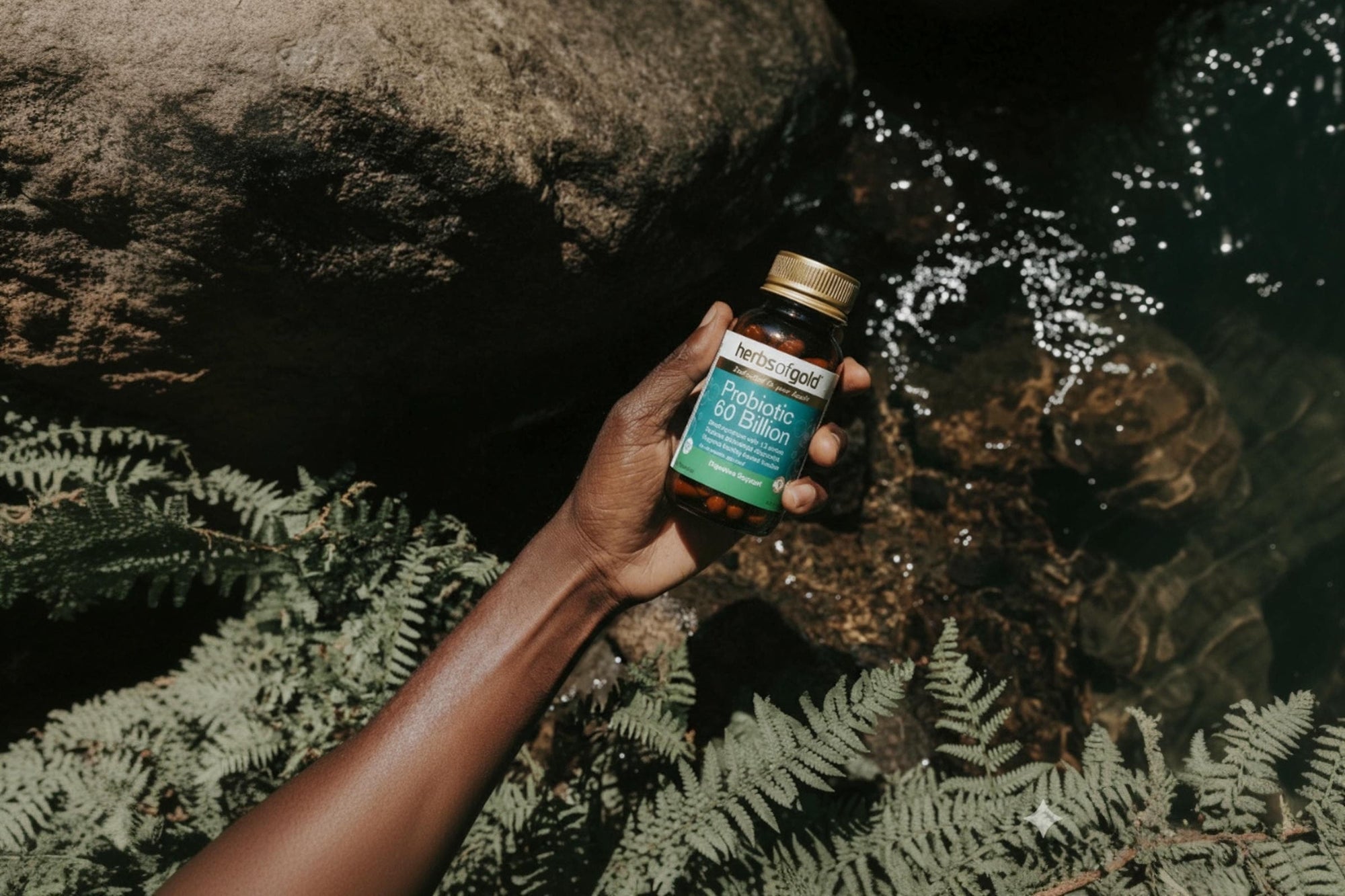
Sea buckthorn oil: a plant-based oil with real-world benefits
Share
Sea buckthorn oil is a rich source of skin-loving omega fatty acids that help nourish and hydrate the skin from within. Read on to discover how this golden oil works and why it could be a new addition to your skin and eye care routine.
Sea buckthorn has a long history of medicinal use in Asia, India and Europe. In modern times, the oil of Sea buckthorn has been a popular choice for its cosmetic properties supporting skin health and also nutritionally for its ample source of health-promoting constituents.
Medicinal compounds include:
- Polyunsaturated fatty acids – alpha-linolenic acid (omega-3) and linoleic acid (omega-6)
- Monounsaturated fatty acids – palmitoleic acid (omega-7) and oleic acid (omega-9)
The unique blend of these bioavailable, moisture-locking omegas is specific to Sea buckthorn oil. In particular, Sea buckthorn oil is one of the richest natural sources of omega-7, a rare fatty acid known for its skin supporting properties.
Hydrate from within
One of the standout properties of Sea buckthorn oil is its exceptional capability to support skin hydration, and as such, is ideal for individuals with dry, lack lustre skin. Skin hydration plays a fundamental role in maintaining overall skin health. When the skin is properly hydrated it appears plump, smooth and radiant.
Struggling with dry winter skin? Follow our 3-step routine
- Tip 1: The wonders of water
Drinking water ensures all the right nutrients for skin health reach our skin, while also supporting the elimination of toxins from the body, helping to both flush the system and hydrate the body.
- Tip 2: Cover up
The heat of the sun can dry out areas of unprotected skin, while UV rays can deplete the skin of its normal lubricating oils. Protecting your skin from theses harmful elements helps to support skin integrity and suppleness.
- Tip 3: Herbs of Gold Sea Buckthorn Oil
Herbs of Gold Sea Buckthorn Oil contains Omegia™ Sea buckthorn oil, a blend of fruit and seed oil providing a balance of omegas including omega-3, 6, 7 and 9 fatty acids. Omegia™ Sea buckthorn oil is high in omega-7, important for supporting both skin health and skin hydration.
Digital dryness? Sea Buckthorn oil to the rescue!
Beyond its skin-loving benefits, Sea Buckthorn oil also helps to relieve dry eyes, making it a versatile ally for living in the modern world. Have you ever noticed your eyes dry after hours on a screen? Welcome to the age of digital dryness! Staring at devices increases your blue light exposure and actually decreases your blink rate by 60-80% which means your nourishing oily tears are not spread over the eyes to lubricate them[1]. Other factors that can contribute to dry eyes include airconditioned indoor environments and contact lenses. Dry eyes are remarkably common, with a 2022 survey by Optometry Australia revealing that 85% of Australians have experienced dry or irritated eyes[2].
Support your eye health with these tips and tricks
- Tip 1: Screen height
Keep screens below eye level. This way the eyelids do not have to open as much, meaning less of the eye’s surface is exposed for prolonged periods.
- Tip 2: Rest periods
Ophthalmology experts recommend implementing the 20-20-20 rule. This rule suggests individuals look at something 20 feet away (6 metres) for 20 seconds every 20 minutes of the day.
- Tip 3: Herbs of Gold Sea Buckthorn Oil
Research shows daily Sea buckthorn oil benefited individuals with dry eyes by positively influencing tear production and reducing inflammation[3].
If you’re feeling the effects of modern life on your skin and eyes, consider Herbs of Gold Sea Buckthorn Oil for some omega-powdered hydration support.
[1] Kaur, K., Gurnani, B., Nayak, S., Deori, N., Kaur, S., Jethani, J., Singh, D., Agarkar, S., Hussaindeen, J. R., Sukhija, J., & Mishra, D. (2022). Digital eye strain- a comprehensive review. Ophthalmology and Therapy, 11(5), 1655–1680.
[2] Optometry Australia (2022). 2022 Vision index: taking a closer look at Australian’s eye health. https://www.optometry.org.au/wp-content/uploads/GVFL/Vision_Index/2022-Vision-Index-Report.pdf
[3] Larmo, P. S., Jarvinen, R. L., Setala, N. L., Yang, B., Viitanen, M. H., Engblom, J. R., ... & Kallio, H. P. (2010). Oral sea buckthorn oil attenuates tear film osmolarity and symptoms in individuals with dry eye. The Journal of Nutrition, 140(8), 1462-1468.
